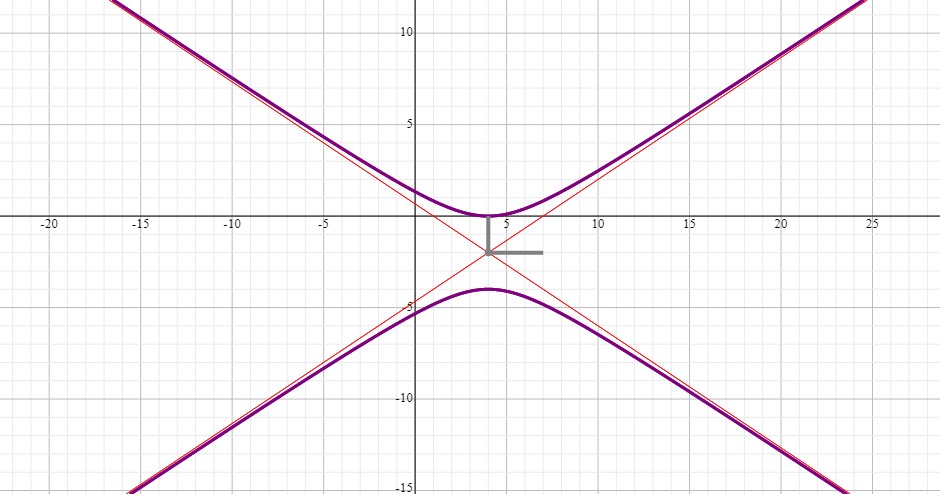How would I write #-4x^2 + 9y^2 + 32x + 36y - 64 = 0# in standard form? What are the steps?
2 Answers
One should use the Discriminant:
to determine which conic section the equation describes.
If
If
If
We observe that
There are two standard forms for a hyperbola.
1 The horizontal transverse axis form:
2 The vertical transverse axis form:
If either case, we need to make the equation fit the patterns:
then one of the two forms will follow.
Returning to the equation:
Add 64 to both sides and group the x terms and y terms together:
Please observe that the coefficient of the
This tells us that we must subtract
We can find the value of h by setting the middle term in the pattern equal to the corresponding term in the equation:
We can substitute
Simplify the right side:
Please observe that the coefficient of the
This tells us that we must add
We can find the value of k by setting the middle term in the pattern equal to the corresponding term in the equation:
We can substitute
Swap the two terms on the left and simplify the right:
Divide both sides of the equation by 36:
Write the denominators as squares:
The above is standard form for a hyperbola with a vertical transverse axis.
Please see below.
Explanation:
.
First we factor out the coefficient of
Then we need to complete the square for the
Now, we multiply the
After simplifying :
Now. we divide the equation by
After simplifying, we get:
This is the equation of a hyperbola whose graph can be seen below:


